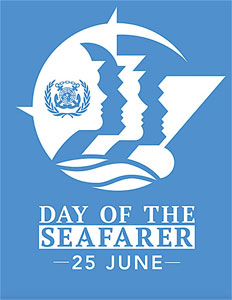A few women who have made their mark in the maritime industry say the key to the field being more gender equal is making women more aware of all of the jobs it offers.
“We need to do a better job of outreach so that all ashore and afloat jobs are seen as viable for women,” said Kathy Metcalf, who blazed trails as one of the first women to attend the U.S. Merchant Marine Academy back in 1974, then worked aboard ships in a variety of capacities.
Metcalf, now president and chief executive officer for the Chamber of Shipping of America, said management needs to be committed to advertising and promoting jobs that will appeal to women as well as men.
Metcalf and others are responding to a recent call by the International Maritime Organization (IMO) for all of those involved in the maritime world to declare their support for gender equality in seafaring. She said companies must realize “how it is in their best interest to have a diverse workforce,” and also give all employees training that equally prepares them for what can be a challenging lifestyle aboard a ship.
Jennifer Carpenter, executive vice president and chief operating officer for the American Waterways Operators, agrees that “getting the word out about the broad range of jobs the industry provides” is paramount to achieving equality.
“There are many more women in our industry than when I started my career in 1990, but the picture is mixed because much of that growth is shoreside,” Carpenter said. “It’s fantastic to see increased representation of women in all aspects of management — in operations, law, finance. But in afloat positions, it’s still very much a male-dominated profession.”
Part of the reason is that there is not a lot of awareness about newer options available for seafaring careers, said Mayte Medina, chief of the U.S. Coast Guard’s Maritime Personnel Qualifications Division. Not all jobs aboard ships require many months away from family and friends. Some have more traditional hours and days off that make them more attractive to women, especially those interested in being mothers as well, Medina said.
Increasing women’s involvement in vessel operations also is challenging because “there’s trepidation being the only woman working on deck, of being the lone sister out there,” Carpenter said, noting that increasing the number of women in such roles will make it a more welcoming career path for others.
Relaxing some requirements — needing to work on deck for three years before advancing to another level, for example — also may be in order to make that possible, she said.
While there still is much room for improvement, the gender split has been steadily moving toward equality, especially shoreside, Medina said. She noted that in 1993, at one of her first IMO meetings, “I had fingers left on one hand” when counting the number of women in attendance. Now, women make up about 45 percent of attendees at such meetings.
Medina said companies are feeling a lot more social media pressure to hire the best candidate, and she applauded the IMO’s emphasis on bringing more women into the industry. And women who have achieved success in seafaring — such as three female captains featured by the IMO in this year’s Day of the Seafarer campaign – are helping to narrow the gap by making companies aware of a “different pool they’ve never tapped before.”
Medina said the Coast Guard is following suit, and it will be highlighting women and their ability to compete in an upcoming issue of one of its publications.

